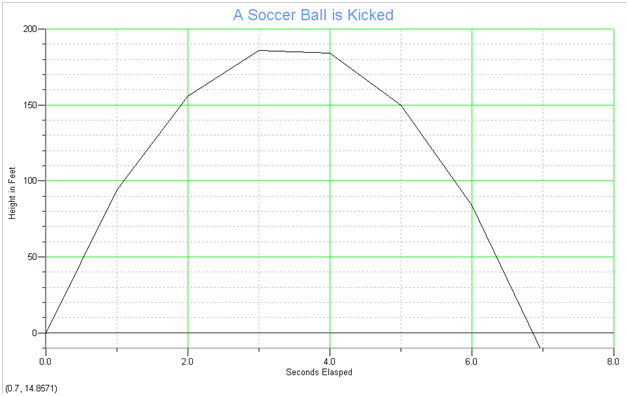Purpose:
To determine the power output of a person.Equipment:
2 two-meter sticks, stopwatch, kilogram bathroom scale, a volunter and a victim!Introduction:
we used 2 main equations for this lab. The first explained the change in potential energy.change in PE=mgh where m is mass, g is gravity and h is height.
The second equation descibed power.
Power=change in PE/change in time where power is measured in watts.
we also used a conversion factor between watts and horsepower
1watt=0.00134102209HorsePower (HP)
Procedure:
- Determine my mass by weighing on the kilogram bathroom scale 100.055kg
- Measure the stairwell. This was acomplished by placing the 2 meter measuring sticks end to end from the first floor landing up to the second floor landing. See the red line on the diagram. Measured to be 4.26m
3. Measure time for two trials accending the stairs. Trial One 6.30 seconds Trial Two 6.78 seconds
4. Calculate personal power output in watts.
Change in PE=mgh
m=100.155kg
g=9.8m/s^2
h=4.26m
Change in PE=4181.271 using significant figures 4200(kgm^2)/s^2
Power=change in PE/Change in Time
Trial one
Change in PE=4200
Change in time=6.30sec
Power=670watts
Trial 2
Change in PE=4200
Change in tme=6.78sec
Power=620watts
Average of Trial 1 and Trial 2
(670+620)/2=645watts average
Conversion to HorsePower
645watts*(0.00134102209HP/1watt)=0.865HP average
Questions:
- Is is ok to use your hands on the handrailing to assist you in your climb ut the stairs? Explain? Answer: Yes! There is nothing in our equations that dictate you must only use your hands the only variable are mass, height, time and gravity. One could climb up the stairs on all four and still have the same change in PE.
- Discuss some of the problems with accuracy of this experiment. The primary problem was measuring the change in time while accending the stairs. the timer stood at the top unable to see the "victim" as they accended. the signal to start was from the timer who communicated with an assistant on the halfway landing. this individual then signaled the victim to begin. There was also some error in measuring of the stairwell hight. the meter sticks had to be placed end to end. Also the kickstop on the guardrail interfered with the measuring. This probably contributed to an error of plus or minus 1cm.
Human Power follow up Questions:
- Two people of the same mass climb the same flight of stairs person A does it in 25s with person B compleating it in 35sec Which does the most work? Answer: They both do the same amount of work since work is not dependant upon the change in time Work=mgh. Since they have the same weight, live on the same planet and are climbing the same stairs, the work is the same. Which person expends the most power? Person A does Power=change in PE/change in time. The smaller the change in time the larger the power.
- A box that weighs 1000 Newtons is lifted up 20.0meters is 10.0sec. What is the power in watts and kilowatts? Answer: 2000watts or 2kilowatts
- A 64kg woman clims a 5.0m ladder. What work does she do? Answer: 3100Nm of work. What is the increase of gravitational potential energy at this hight? Answer: 3100NM increase. Where does this energy come from? Answer: Food! (energy stored in the human body from food).
- which requires more work








